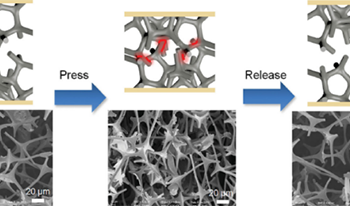
Printable flexible pressure sensors have many important applications in wearable systems. One major challenge of such a sensor is to maintain sensing properties in high temperature. By optimizing the curing mechanism of the flexible pressure sensor functional materials, this paper proposes a new method of achieving high temperature properties for a full printed sensor. The establishment of curing theory is mainly studied. The printing process of this kind of sensor is systematically stated and tested to check whether it can continue to function at high temperatures. Ultimately a fully-printed flexible pressure sensor with good temperature performance is achieved. The paper focuses around the technical route of “material selection—theoretical analysis—function material preparation—design and preparation of device—device performance evaluation”. Suitable materials are used in flexible pressure sensors and the curing mechanism is established. This proposed technique can be extended to the development of other printable flexible sensors, which can lead to a huge impact on future applications of the flexible electronics.
Jingnan Ma, Mengmeng Liang, Wei Wang, "A Full Printed Flexible Pressure Sensor with Improved Temperature Performance based on Optimized Curing Mechanism" in Journal of Imaging Science and Technology, 2022, pp 020406-1 - 020406-8, https://doi.org/10.2352/J.ImagingSci.Technol.2022.66.2.020406
 Find this author on Google Scholar
Find this author on Google Scholar Find this author on PubMed
Find this author on PubMed

